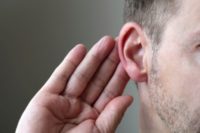Looking for early damage leading to noise-induced hearing loss

 Distortion-product otoacoustic emissions (DPOAEs) provide a window into real-time cochlear mechanical function. Yet, relationships between the changes in DPOAE metrics and auditory sensitivity are still poorly understood.
Distortion-product otoacoustic emissions (DPOAEs) provide a window into real-time cochlear mechanical function. Yet, relationships between the changes in DPOAE metrics and auditory sensitivity are still poorly understood.
Explicating these relationships might support the use of DPOAEs in hearing conservation programs (HCPs) for detecting early damage leading to noise-induced hearing loss (NIHL) so that mitigating steps might be taken to limit any lasting damage.
In the February issue of the International Journal of Audiology a report describes the development of DPOAE-based statistical models to assess the risk of hearing loss from cisplatin treatment among cancer patients.
Ototoxicity risk assessment (ORA) models were constructed using a machine learning paradigm in which partial least squares and leave-one-out cross-validation were applied, yielding optimal screening algorithms from a set of known risk factors for ototoxicity and DPOAE changes from pre-exposure baseline measures. Single DPOAE metrics alone were poorer indicators of the risk of ototoxic hearing shifts than the best performing multivariate models.
This finding suggests that multivariate approaches applied to the use of DPOAEs in a HCP, will improve the ability of DPOAE measures to identify ears with noise-induced mechanical damage and/or hearing loss at each monitoring interval. This prediction must be empirically assessed in noise-exposed subjects.
Looking for a reprint of this article?
From high-res PDFs to custom plaques, order your copy today!






